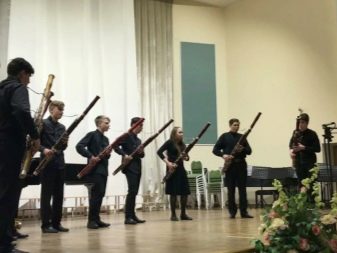What is a bassoon and how to play an instrument?
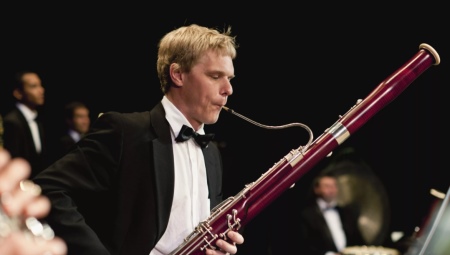
Even just for general development, it is important to know what it is - a bassoon, how it sounds and looks. In addition to the range of sounding, information about what kind of wood a musical woodwind instrument is made from is quite relevant. It is also necessary to pay attention to the use of bassoons in the orchestra and in the practice of individual musicians, to the peculiarities of the tuning.
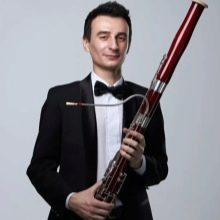
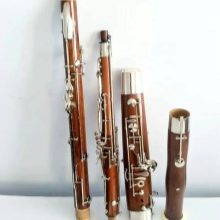
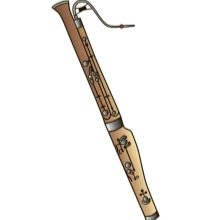
What it is?
The bassoon is one of the representatives of a large family of musical wind instruments. Literally translated from Italian, this word means "knot or bundle." This means, of course, a bundle of firewood. In all descriptions of the bassoon it is necessarily mentioned that it has predominantly bass and tenor register. In part, such an instrument also captures the alto register.
Visually, the bassoon looks like a bent, arc-like pipe of great length. A complex of valves is added to it. The bassoon cane is always double, like the oboe. This cane is strung on a steel tube, which is made in the shape of the letter S. The role of the tube is to connect the cane to the main body of the body.
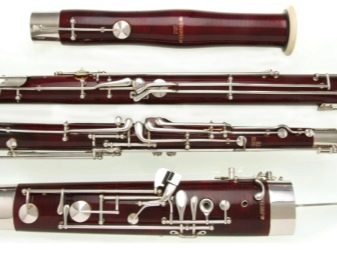
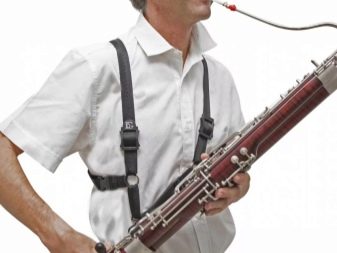
The very term "bassoon" just describes the type of its decomposed parts (disassembled). The main tone is expressive. In any part of the range, it is saturated with overtones. Basically, the device of a classic instrument implies a length of 2.5 m. Its mass will average 3 kg. Bassoons are made of wood, never metal; but not every wood material is suitable for such a purpose.
Maple wood is almost always used. It is appreciated for its dense structure, consisting of straight layers.This tree is homogeneous with sufficient quality of raw materials. Normally, there is no difference between the middle and the edge of the maple trunk; very rarely used as an alternative to the pear array.
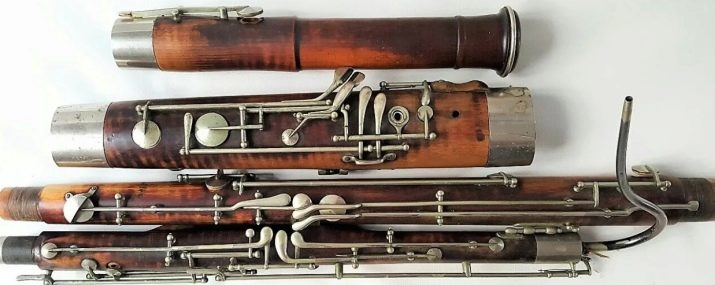
The lower bassoon knee - it is colloquially called "trunk" or "boot" - plays a very important role. In addition to it, there is also a small and large knee, as well as a bell. The bassoons can be easily disassembled. The glass - the very letter S - directly affects the operation of the instrument. The sound characteristics (pitch) are adjusted using the holes in the cabinet. It is impossible to use all of them directly, and therefore a special control mechanism is provided.

Origin story
It is impossible to establish the exact place where the bassoon appeared, and it is impossible even to name the likely inventors. But it is reliably known that the earliest examples of this instrument appeared in Italy in the 17th century. Like many other weapons used by musicians, it had an ancient predecessor, the bombard. It was not demountable, it was much worse tolerated, and it was more difficult to make a bombard. At first, the new development was called dulcian ("gentle sweet"), which emphasized the softening of the sound in comparison with the sound of the bombard.
Originally bassoons were equipped with 3 valves. In the next century, they reached the point that there should be exactly 5 of them. Early enough, the bassoon acquired an independent role in music. 17th century composers such as Biagio Marini, Dario Castello and a number of their lesser-known colleagues wrote for him. In the future, the instrument was improved by Savarre, Treber, Buffet.
The first industrial enterprise for the production of bassoons was established by Karl Almenreder and Johann Haeckel in 1831. It is thanks to him that the leadership in the production of such instruments passes to Germany. Previously, masters from Austria and France dominated. German musicians, however, already in the 18th century appreciated all the possibilities of bassoon music and began to use it very actively. Gradually, however, this trend faded into the background.
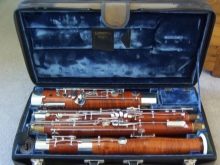


Sound
The bassoon sounds beautiful - all music connoisseurs agree on this. It has a very gentle timbre at low frequencies. Among the entire range of sounds, bassoonists most often play just in the lower part. Associations arise either with the buzzing of a bumblebee, or with playing the oboe. Acoustic brightness and expressiveness are noted.
Sometimes because of this, even some sharpness appears. Despite the mobility of the bassoon, it is not easy to use for fast passages. However, they managed to turn a disadvantage into an advantage - the fast, abrupt playing with its specific effect pleased many composers. With a certain manner of playing, bassoonists achieve a gentle and languid sound. The lowest level for this instrument is from B flat on the controctave to D on the second octave.
Technically, you can achieve higher sounds, but they usually sound bad and are rarely used when writing music.
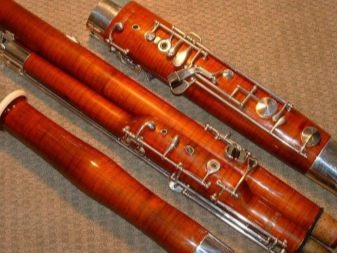
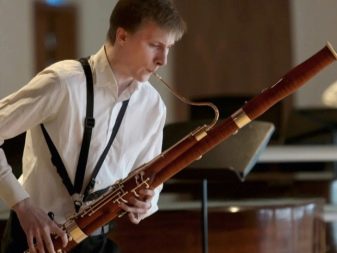
Orchestral use
In the past, the bassoon did not immediately take a certain place among the instruments. Initially, he was assigned the role of a bass amplifier. However, already in the 17th century, the writing of solo and ensemble works began. In the next century, bassoonists appeared in opera orchestras. Later (up to the present day) they became full-fledged members of symphony and brass bands; there, 2 or 3 musicians play this instrument, in rare cases one more is added.
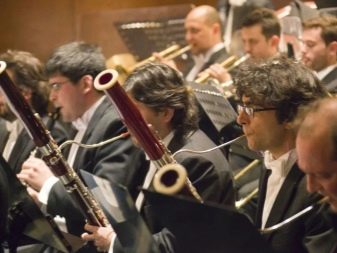

Instrument in music
The musicians of the past themselves have tried the bassoon in various genres and compositions. Already early copies of the instrument received complex parties. Only after the improvement of the construction did it become a full-fledged attribute of the opera. There, bassoonists are instructed to demonstrate the uncertain, restless character of individual characters, their emotional instability; the emphasis on the tragic, on the funny or sad sound is also practiced.
Such transitions, in particular, Tchaikovsky used in a number of his works. Abroad, attention was paid to the bassoon by Haydn, Bach and some lesser-known composers. A concert in B major was specially written for him by Mozart. Vivaldi wrote much more for this instrument. The famous Italian anticipated the subsequent development of musical art by introducing techniques that were fully appreciated only after a few decades.
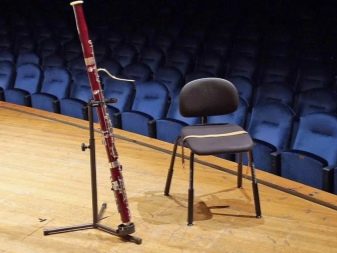
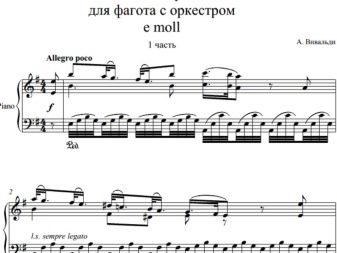
The nuances of the game
It is very difficult to find reliable information about bassoon fingering. The tuning of the instrument is quite simple. If you open all the holes, you get the note "F". By adding the closure of one hole after another (on the first overtone), the notes are obtained in turn:
-
e;
-
d;
-
c;
-
H;
-
A.
Sounds above "fa" are achieved by blowing over to the 2nd overtone. Bassoon players need to half open the upper opening and use the support of 3 octave valves. In this case, the fingering corresponds to the minor and major octaves. This method achieves the d1 note.
You can also increase the sound by blowing in the 3rd or 4th overtone; only experienced musicians get to f2, but it is extremely difficult for them too.
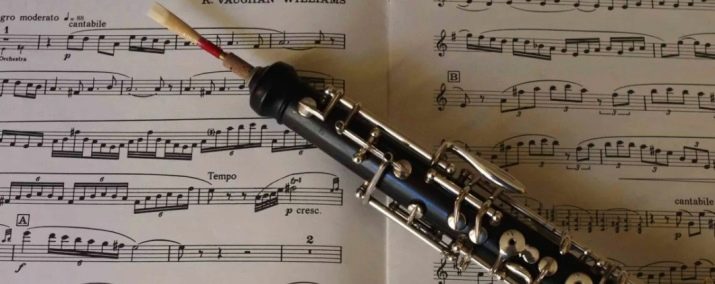
The lower register from the large octave G and further is extracted by closing the additional large knee valves. The main holes should also be closed at this moment. The right hand receives the sounds G, F and E. To make the D-B range, as well as any sound included in it separately, use the thumb on the left hand. Trills and tremolo cannot be played on the bassoon, and those that include altered notes are not worth trying to reproduce.
Technically, the bassoonist's playing is not much different from the oboist's. But the load on the respiratory system will be much more impressive. The staccato game is based on a simple single language, and, importantly, you need to play a simple staccato much faster than other wind reed instruments. It is difficult, but it produces a distinctly audible, “sharp” sound. In skillful hands, the instrument demonstrates virtuoso leaps of 1 octave or more.
Changing the register on the bassoon can be as imperceptible as on the flute. When played in the upper and lower registers, the staccato technique implies a slower play than the middle range. Melodic phrases of middle breathing alternate with sections of gamma-like passages and arpeggios.
The skill of the musicians is expressed in the ability to use combined shading. A wide range of jumps are allowed.

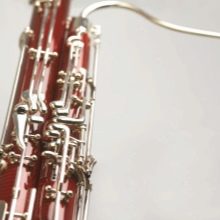
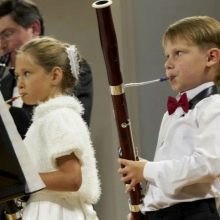
Interesting Facts
In the future, the bassoon was considered to sound divine. Although it sounds relatively gentle compared to the bombard, it is very difficult to notice it in modern orchestras, because even more “gentle” instruments have appeared. The dynamic range of bassoon music is 33 dB. You can perform it using all fingers on your hands. No other symphonic instrument makes such a requirement.
Curiously, the bassoon player's left hand is especially heavily loaded. Her thumb coordinates 9 valves. In comparison, the right thumb is used to manipulate "only" 4 valves.
The reeds of this instrument and the oboe are similar, but in the bassoon it is larger and does not contain a steel pin. In his works, Wagner strove to bring bassoon music to an ultrahigh level.
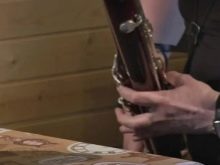
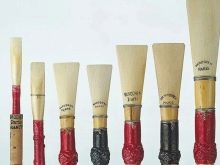
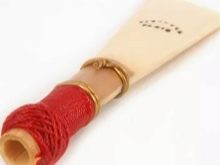
When playing his "Rings of the Nibelungen", the score prescribes to play the sound "la" on the counter octave. In this case, the orchestra members are forced to insert a rolled-up newspaper into the bell, otherwise such a low sound cannot be achieved. And in "Tannhäuser" the bassoon is required to produce the "mi" of the second octave. This high frequency is only available to high-profile musicians. To support them at least a little, the same Wagner invented amplification of the sound with a string group.
Bassoon players learn from the age of 9 or 10. Only some models of school instruments can be made of plastic.The difference between the French and German systems is only noticeable to the performers; listeners are unlikely to find it.
